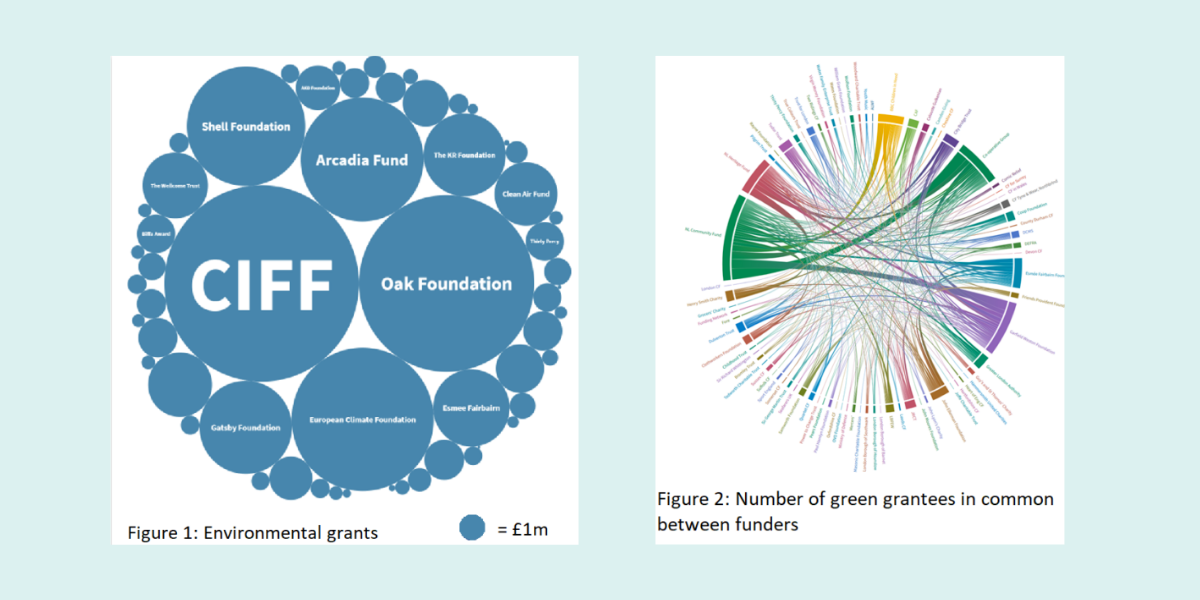How grantmakers are responding to the climate crisis
For Lucent, understanding an organisation’s assets and the field around them is an important part of making strategic choices. Mapping your field can highlight new opportunities, scope for collaboration, and reduce the chances of duplication.
In the summer of 2020, Calouste Gulbenkian Foundation were considering how they could help tackle the climate crisis. They engaged Lucent to help map their field – climate funders - and have kindly agreed that we can share our findings.
1. Which funders are already working on climate?
Firstly, we wanted to get a broad sense of the field. We looked through the most recent two years of accounts of all the top 100 foundations in the UK, plus those featured in previous research by the Environmental Funders’ Network (EFN) and some newly established philanthropies, to find out who was funding environmental causes in general.
We took an inclusive approach, including several foundations based outside the UK because they were actively funding in the UK, as well as foundations whose accounts were filed in the UK, even if their grantmaking was mainly or exclusively overseas.
Of the 80+ ‘green funders’ that we found, there were just a handful of funders operating at a large scale, with environmental grantmaking above £5m per year (see Figure 1 below). Meanwhile, there were several dozen operating at a smaller scale, with environmental grantmaking below £1m per year.
The overall picture that emerged from this research was clear: there were relatively few ports of call for would-be green grant applicants. And further, not all of these ports were open; more than a few operated by invitation only or were only open at certain times.
Within this picture, only some of this environmental grantmaking was dedicated to climate change per se; much of it was focussed on complementary efforts conserving nature and wildlife. But we passed the full list to EFN and encouragingly found many of these green funders were already involved in its Climate Funders Group.
Another encouraging sign was that most of the newly-established funders on our list, and several foundations that had not previously been involved in environmental issues, were committing new resources to tackling climate change. The growing list of signatories to the Funder Commitment on Climate Change suggests still further interest and may see future commitments in this space.
2. Which organisations are being funded?
Our next step was to find out which organisations were being funded.
Many green funders publish their grants using the 360Giving data standard or list them in their accounts, but not enough to get a comprehensive view of where their ‘green grants’ were going. Moreover, searching for terms such as ‘environment’, ‘climate’, and ‘sustainability’ threw up too many red herrings – lots of grants mention ‘financial sustainability’, for example.
So instead, we searched the Charity Commission database to identify environmental charities. This revealed around 4,500 environmental charities in England and Wales, of which surprisingly only 153 explicitly mentioned climate change in their top-line objectives or activities.
We then used the 360Giving Datastore to see whether it included grants for these charities. We found around 950 environmental charities had received at least one grant. It was a highly overlapping field, with some charities receiving grants from multiple funders (see Figure 2 below, in which each coloured strand represents a grantee in common between two funders; see also the interactive version here).
We reflected that these grantees-in-common are likely to be spending considerable time and resources in applying for and reporting on these multiple grants; and their funders in assessing and managing them. If a small number of grantees are considered critical to efforts to tackle climate change by several different funders, would unrestricted, coordinated or pooled funding approaches enable greater efficiency?
Additionally, we wondered about who wasn’t currently getting funded, which led to our third question.
3. Where could new grant funding make the biggest difference?
Overall, we found the scale of grantmaking was still very small relative to the urgency and scale of climate change. So, what scope was, and is, there for new grant funding to make a difference?
There is a role for civil society to play as distinct from the role and investments that need to be made by government and business. Yet, civil society is made up of many different actors and approaches: some organisations are already well-resourced via membership fees or public donations; others already enjoy the support of multiple funders.
So, perhaps the more probing question is: what does civil society need in order to play its part in tackling the climate crisis – but that might be harder to fundraise for?
Some ideas we discussed with EFN and its Climate Funders Group were:
Grassroots / community organising
New / emerging movements or organisations
Lobbying / protests / legal actions
Local collaboration / systems work
Infrastructure / coordination
Leadership development
Sharing learning, research and data.
This list is by no means exhaustive and not every funder will be equipped to do these things, but for those entering this field afresh, it would be a reasonably safe bet that these are some of the opportunities to make a positive contribution with additional grant funding.
For the more established climate funders, thinking not just about your own funding but how it fits within the wider ecosystem of funding will be important. Publishing grants data is a solid start and moving beyond this to sharing information about what’s working and what isn’t, what you’ve not been able to fund, and what other needs you perceive, will all help to underpin the efficacy of this growing sector.
Written by Charlotte Ravenscroft (Consultant) and David Kane (Data Analyst)
A version of this blog was first published on www.greenfunders.org in March 2021
There were a few major ‘green funders’ whose accounts did not disaggregate their environmental grantmaking from their wider grantmaking, most notably the Lottery distributors, and are therefore not shown in Figure 1. Note that the European Climate Foundation and Clean Air Fund receive funds from some of the other funders shown in Figure 1 and there is therefore some overlap.

